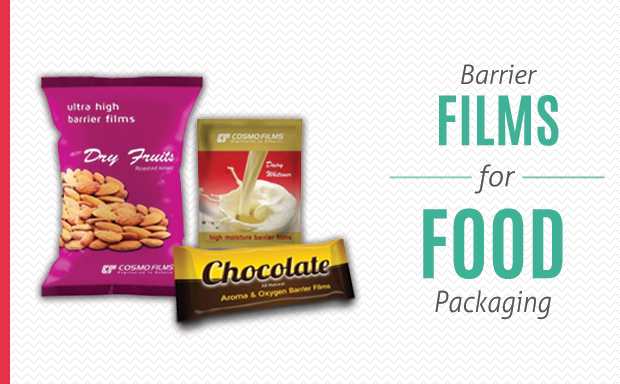The use of barrier films prevents food items from deterioration by bringing down or preventing oxygen as well as water vapor penetration. The films are becoming popular as the volume of prepackaged foods grows. This helps sales outlets bring down the labor expenses of on-site packaging.
Some benefits of Barrier Films
Barrier films are employed in most food packaging solutions particularly in thin plastic-based items. As the quality of food packaging solutions is dependent on the efficacy of the barrier it is imperative to choose the suitable kind of film for your specific purpose.
Minimum Oxygen Transfer Rate
One major factor to take into account is the oxygen transfer rate (OTR) of the pertinent film. OTR put simply is the quantity of oxygen that a barrier film permits to go through it. In majority of the food packaging solutions lesser oxygen is preferred. As high barrier films possess an oxygen permeability of 10 cc and lesser they are widely employed in food packaging applications.
As barrier films are versatile as well as reliable the former is surging in use year by year by the food packaging industry. There are a plethora of barrier films available today. Each provides unique advantages for different kinds of food items.
Ethylene vinyl alcohol barrier film is perfect for fish, meat as well as poultry packaging. The reason being the former possessing an OTR of 0.6.
Polyester(PET) is employed as a laminating substrate. The former’s advantages are heat resistance, potent oxygen barrier as well as superior durability. If laminated to certain miscellaneous materials it is an effective barrier to water as well as shields food products from UV rays.
Nylon is engineered to be microwaved or cooked as a result of its superior strength as well as relatively high melting point. Hence the former is widely used as well as popular in food packaging solutions. Polypropylene is a transparent, high barrier as well as flexible film offering excellent OTR as well as potent moisture barrier. LLDPE (Linear low-density polyethylene) offers transparency as well as excellent OTR perfect for flexible fresh produce food packaging.
Various combinations of the above barrier films are also leveraged in food packaging solutions.
Some benefits of Barrier Films
- Shields food from ultra-violet rays
- Does not allow oxygen to enter the food package
- Does not permit odors to penetrate the package
- Ramps up moisture barrier properties
- Boosts gas barrier properties
Barrier films are employed in most food packaging solutions particularly in thin plastic-based items. As the quality of food packaging solutions is dependent on the efficacy of the barrier it is imperative to choose the suitable kind of film for your specific purpose.
Minimum Oxygen Transfer Rate
One major factor to take into account is the oxygen transfer rate (OTR) of the pertinent film. OTR put simply is the quantity of oxygen that a barrier film permits to go through it. In majority of the food packaging solutions lesser oxygen is preferred. As high barrier films possess an oxygen permeability of 10 cc and lesser they are widely employed in food packaging applications.
As barrier films are versatile as well as reliable the former is surging in use year by year by the food packaging industry. There are a plethora of barrier films available today. Each provides unique advantages for different kinds of food items.
Ethylene vinyl alcohol barrier film is perfect for fish, meat as well as poultry packaging. The reason being the former possessing an OTR of 0.6.
Polyester(PET) is employed as a laminating substrate. The former’s advantages are heat resistance, potent oxygen barrier as well as superior durability. If laminated to certain miscellaneous materials it is an effective barrier to water as well as shields food products from UV rays.
Nylon is engineered to be microwaved or cooked as a result of its superior strength as well as relatively high melting point. Hence the former is widely used as well as popular in food packaging solutions. Polypropylene is a transparent, high barrier as well as flexible film offering excellent OTR as well as potent moisture barrier. LLDPE (Linear low-density polyethylene) offers transparency as well as excellent OTR perfect for flexible fresh produce food packaging.
Various combinations of the above barrier films are also leveraged in food packaging solutions.

